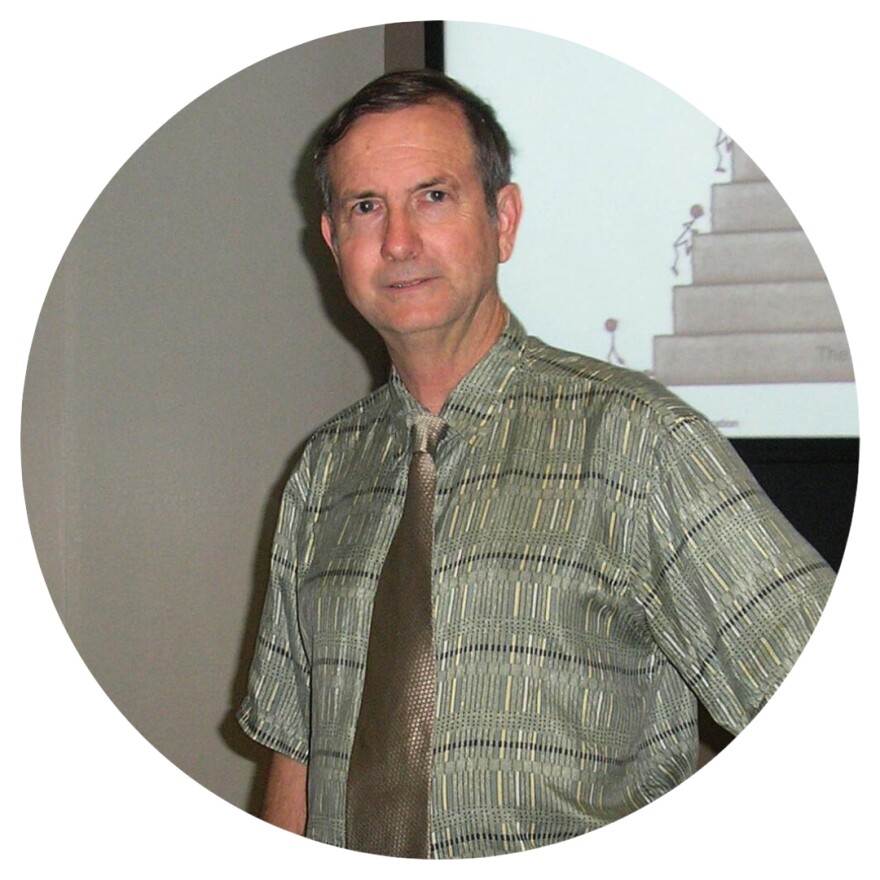Using a new state-of-the-art telescope, Pensacola-area astronomer Dr. Wayne Wooten is helping explore and map a galaxy 72 million light years from Earth.
“It is, for a long time — just from sheer beauty and shape — been my favorite galaxy in the whole sky. But it's not one of the really bright, close ones,” said Wooten, a retired astronomer at Pensacola State College.
With his new digital telescope, the eVscope eQuinox, which can gaze into deep space, he began collecting data on NGC 1300.
“I could see the spiral shape in the galaxy very nicely," said Wooten. "It's kind of like an ‘S’ bar. I was just enthralled that it was that pretty. I took that image of it on November 27. Doing some pretty darn good deep sky imaging. It's amazing what that little telescope can do.”

The Eridanus Cluster is roughly half the size of our Milky Way, at 110,000 light years. It was discovered by John Herschel in 1835. About two weeks after Wooten’s observation, a French husband and wife observer team discovered a supernova within the galaxy. They asked Wooten to refine and enhance his raw data for any image of the supernova.
“Because when they recorded it was easy to see — magnitude 16.5 is for the eVscope amazingly bright,” he said. “My first glance at the raw data, I told them 'now, obviously I took it before it began rising.' And they said, ‘keep trying.’”
He did. Wooten went to an image taken by a 32-inch reflecting telescope, taken by friend Adam Block at the University of Arizona. He discovered his and Block’s images were the same.
“And then the next question is: what's missing? Is there a star that I recorded on November 27 that was not in Adams image of March of 2021? Yes, it's faint, but it's there,” Wooten said.
The supernova, which Wooten says is still on the rise, is about three times fainter in his photo than it was in the discovery image taken in France two weeks later. That, he says, will add some more information to our knowledge about supernovas.
“Like, how quickly do they rise in brightness? How quickly do they fade? What is their total output?,” asked Wooten. “What kind of mechanisms? How long do these stages of a supernova stellar death take? All that kind of information is vital, whether my little bit and piece will fit into it overall.”
The ongoing investigation of NGC-1300 will continue by Wooten and other members of the research community and not by an agency such as NASA.

“These observations that I submit to Unistellar [eVscopeare] in their database,” Wooten said, “I'm sure there are going to be several researchers that will go back and use my raw data and do their own enlargement and enhancement and see if they come to the same conclusion that I did.”
Closer to home, 2023 promises to be a year of celestial entertainment for us Earthlings. Wooten says it begins after a near miss on a possible eclipse involving Mars and the moon that was seen in other parts of the U.S.
“Well, God is fair on the evening of January 30, just a few minutes before midnight, it's our turn,” said Wooten. “We will see Mars vanish behind the moon for 43 minutes locally.”
During the eclipse, Mars will look tiny next to the moon. The Red Planet is actually three times the size of the moon, but is 200 times further away.
The big one, says Wooten, is an annular solar eclipse that will cross North, Central, and South America on October 14.
“We locally will see about 80% of the sun covered by the moon, said Wooten. “And we're preparing thousands of solar eclipse sunglasses to be distributed at the schools, churches, Boy and Girl Scout groups, and community organizations.”
The glasses are a reminder that it’s not safe to view any solar eclipse with the naked eye. Safety guidelines can be found at the NASA webpage.
You can learn more about what to see in the night skies by following Wooten's column, Skies of the Gulf Coast, on this website.

